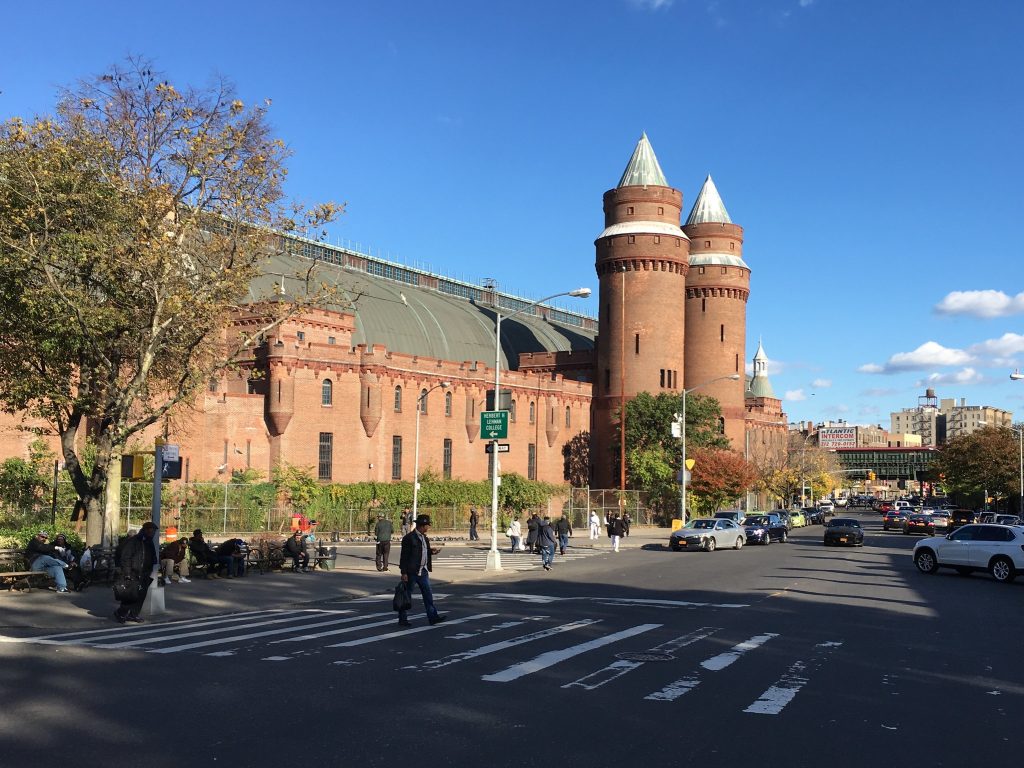This how to guide is reposted from PowerSwitch Action’s “Community Benefits Agreements” policy toolkit. The toolkit and additional resources can be found here.
A Community Benefits Agreement or “CBA” is a contract signed by community groups, a real estate developer, and sometimes a government body that requires the developer to provide specific amenities and/or mitigations to the local community or neighborhood. Site-specific community benefits agreements (CBAs) ensure that development projects create meaningful opportunities for local workers and communities. Projects with CBAs can change the city’s development paradigm; when decision-makers realize the advantages of projects with real benefits negotiated directly by impacted communities, the city may enact community benefits policies that set the stage for community benefit on a bigger scale.
Why the Community Benefits Model Works
- Community Benefits Agreements give impacted but traditionally excluded communities and individuals a real voice in land development, setting the stage for greater community stewardship of land.
- Community benefits tools maximize returns on local government investment in development.
- Community benefits programs can transform regions through stronger, more equitable economies.
- Community benefits help generate public support for economic development projects.
- CBAs hold developers accountable for their promises to local governments and residents.
- Public input results in better projects that benefit the whole community and attract local customers.
- Time is money, and projects with CBAs often enjoy a faster, smoother entitlement process.
What Is a CBA?
A Community Benefits Agreement (CBA) is a project-specific agreement between a developer and a broad community coalition that details the project’s contributions to the community and ensures community support for the project. Addressing a range of community issues, properly structured CBAs are legally binding and directly enforceable by the signatories.
In some cases, the community benefits terms from a CBA may be incorporated into an agreement between the local government and the developer, such as a development agreement or lease. That arrangement gives the local government the power to enforce the community benefits terms.
CBAs allow a win-win approach to development: meaningful, up-front communication between the developer and a broad community coalition decreases developers’ risk while maximizing the positive impact of development on local residents and economies. The developer benefits from active community support of the project, and community members gain when the project meaningfully meets their needs and they have a role and stake in ensuring community benefits are actually delivered..
CBAs offer two important advantages over the traditional land use approval process. First, the process of negotiating a CBA allows for a more constructive and collaborative conversation about meeting community needs than the often adversarial, highly structured, time- and subject-matter limited hearings that are part of a local government’s project approval process. Second, a private agreement is free from certain critical legal constraints that apply to government conditions on development projects, so the community and the developer may negotiate over a wide variety of deal points and come up with creative approaches.
Community benefits coalitions are long-term, broad-based groups with deep roots in the community. Coalitions should represent a broad array of community stakeholders, particularly BIPOC residents and others traditionally marginalized in land use processes, and typically include local organizing groups, representatives from labor, environmental and faith groups, and affordable housing advocates.
Community Benefits Policies
Multi-Parcel Development Standards
Local governments can proactively guide future growth by applying community benefits principles to large parcels of land slated for development. If the land is government-owned or developed under an agreement with the local government, officials can incorporate community benefits into requests for proposals.
Community Benefits Standards
Community benefits policies attach standards to subsidized development and other economic activity with which a city has a relationship like public works or projects on city-leased land. Living wage ordinances, targeted hiring requirements, and mixed-income housing requirements are examples of community benefits standards. These policies make the development process more predictable by making the community’s expectations clear to all stakeholders and reducing the need to articulate community benefits on a per-project basis.
Framework for Success
Step 1: Build the Coalition
Building a coalition is an ongoing effort. Ideally, coalition building starts long before engaging a developer in response to project plans and it extends beyond signing a CBA. However, some coalitions can grow organically in response to a specific development. Either way, it is highly recommended that coalitions be broad, representing a variety of community interests. It is important that agendas are negotiated within the coalition so that the developer and city are not forced to deal with various groups, which can weaken the advantage of negotiating with a coalition.
Step 2: Issue Education
Like coalition building, issue education is an ongoing process. Issue education can start before a particular project or campaign is in place, or it can begin at the start of negotiations. It’s an important part of the CBA process because it encourages groups within a coalition to speak the same language. It also builds trust and a common agenda. In addition to educating coalition staff members, issue education can also involve training grassroots community members and/or neighborhood residents to act as advocates for the issues.
Step 3: Identify the Project
CBA campaigns generally develop in one of two ways:
- A project is proposed by the developer and a coalition forms around the project.
- A coalition already exists and regularly tracks city development plans to identify proposed projects that have the potential to generate a benefits agreement that is in-line with the issues they advocate.
Step 4: Research
Research is an important precursor to negotiations. Some key research goals include understanding the development process, locating the leverage points, and highlighting existing and alternate regulations.
Step 5: Community Assessment
A community assessment is the process of discovering what is important to the community. Often that process begins with a large community meeting. Top concerns are usually related to jobs, housing, neighborhood services, and environmental issues. This is a particularly important step for coalitions, because it ensures that they accurately represent the interests of their community.
Step 6: Identify Community Priorities
In this stage, importance is placed on moving from a laundry list of demands to a prioritized needs assessment for the specific neighborhood. This assessment will be the basis of negotiations and can be a difficult process.
Imagine that a coalition identifies an environmental issue as the highest priority, but community assessment reveals that the neighborhood is far more concerned with jobs. This is where issue education and community assessment is useful, because it will help the coalition determine which issues to fight for, and which they can—and possibly should—make concessions on.
Step 7: Apply Leverage
There will be times when the coalition needs to “flex its muscle.” The power of the coalition must be apparent before the development approval process is complete, which allows meaningful opportunities to make a lasting impact. Negotiations should not begin until the coalition has achieved sufficient power and visibility. This lends the coalition credibility and forms the basis by which they will win any of their negotiating points.
Step 8: Form a Negotiating Team
The negotiating team should include experienced negotiators, people well-versed in the issues being discussed, and those who may be able to anticipate the developer’s responses. If legal counsel has not been involved up to this point, now is the time to seek legal advice, and possibly even hire an attorney to be present during negotiations. Remember, it is important to account for the good-will of coalition members, to make sure people feel that they are well-represented, and to protect their interests.
Step 9: Negotiations
Negotiations work best when they’re community-driven and reflective of an honest assessment of what that project means for the local people and what they themselves would like to see occur at that site. Coalitions should enter negotiations knowing which issues they plan to fight for and where they will make concessions, and be prepared with alternatives and “creative solutions” to counteract objections the developer or the city might have.
Step 10: Sign the CBA
At this step, there may be considerable back-and-forth between the coalition’s legal counsel (if counsel has been retained) and lawyers for the developer as both sides work on the creation of the legal document. Signers of a CBA can include coalitions or groups within the coalition, the developer, and possibly the city.
Step 11: Coalition Support
Remember, the primary incentive for the developer to sign a CBA is for the coalition to show support for the project. This is the step in which the developer expects YOU to hold up your end of the deal. After—and sometimes even before—signing the CBA, the coalition will be asked to demonstrate support for the project. Support may include agreeing to not oppose the project, appearing at press events, and appearing before the city council.
Step 12: Implementation, Monitoring, and Enforcement
It is essential for the coalition to maintain a continuing oversight body to ensure that the terms of the agreement are being upheld. Ongoing communications between the community and developer, and ongoing communication between members of the coalition, is also critical.
Implementation of the CBA can begin on the date of signing and may extend for years, during which time the terms—such as selecting contractors and tenants, putting in place training programs and first source hiring systems, and building and renting affordable housing—begin coming to fruition. Often, the terms of a signed CBA will need to be renegotiated as the project moves forward and new issues or difficulties arise. Coalitions should be prepared to continue acting as watchdogs for community interests long after the agreement is signed.
Note: This how-to guide was originally written by Nina Ignaczack and adapted from an original how-to guide on Community Benefits Agreements by PowerSwitch Action (formerly the Partnership for Working Families) on January 28, 2014. The guide was updated with PowerSwitch Action’s policy toolkit, “Community Benefits Agreements” on September 24, 2024.


